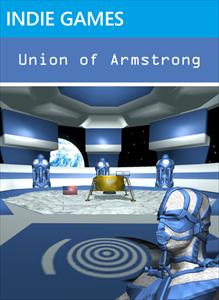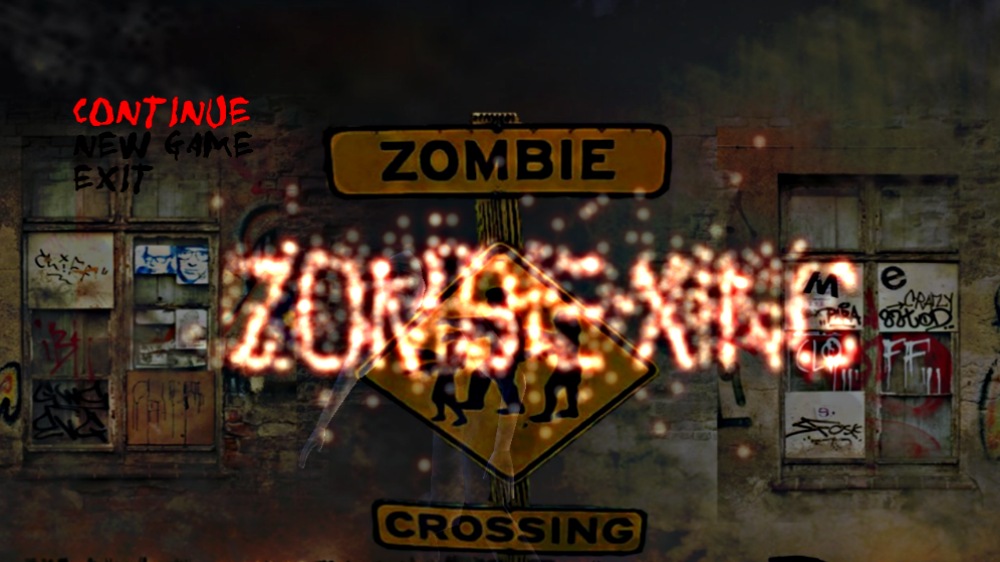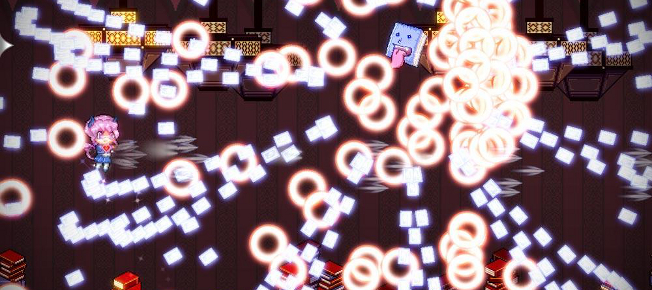Tower defense games have seen some notoriety over the years in terms of commercial and critical success like the ubiquitous Plants vs. Zombies. At the same time, it’s a genre that has largely remained unchanged for years. In order to stand out from the crowd, developers must now find a way to put a different spin on a classic gameplay design. With the recent release of Union of Armstrong on Xbox Live Indie Games, development studio Domain of the Infinite has attempted to supplement standard tower defense mechanics with a unique setting, minor gameplay tweaks, and ambitious presentation additions. However, in trying to do something new, some of the core design elements haven’t received the attention they need.
Union of Armstrong is set in the future on the surface of the moon. You’re tasked with defending the Apollo 11 landing site from being taken over by an evil mining corporation, Luna. Your conflict with the enemy takes place in both a tower defense style battle structure, as well as in some brief conversational dialogue trees in between rounds. The tower defense genre isn’t particularly known as a powerhouse of storytelling, so it’s nice that Domain of the Infinite saw fit to include a unique fictional setup.
The tower defense design of the game is fairly simplistic, and intentionally so according to the developer. Your base is centrally located on the screen and, depending on what level of the game you’re in, there may be anywhere from one to four paths leading to it. Tower selection is limited to three types: a standard unidirectional attack tower, a more costly 4-directional attack tower, and a tower for slowing enemy progress. You can divert any of your ‘Resources’, ‘Defense’, and ‘Power’ units between each other at any time. Towers are purchased using ‘Resources’ which are earned by defeating enemies. Every tower uses up ‘Power’ so you must ensure that your ‘Power’ units don’t get completely depleted. At the same time, you have a ‘Defense’ rating that indicates how much health your base has left. Once it runs out the game is over. Unfortunately, you can’t select how much of a particular item to shift, you simply move all of that category to another.
There are a few other issues with the basic mechanics. To remove a tower, you must remove the most-recently placed tower first, then the one before that and so on. You can’t directly select a particular tower for removal. It’s a frustrating design choice, particularly when making poor tower placement choices as you’re first getting used to the game. Overall, the game felt particularly easy as well. This may be attributed to the fact that as an experienced tower defense gamer I was already acclimated to common strategies involving which type of towers to place and where. The first half of the game felt far too easy, and even on the later levels I was able to lay down enough towers early so that I could just sit back and watch the carnage. A lack of diversity in enemy types means that players can find one strategy and just stick with it the entire game.
But in a nice twist on the tower defense genre, the base has a shield capability which can be activated at any time. The tradeoff is that turning on the shield will drain your ‘Power’. It’s a necessary evil though as a large enemy ship will periodically approach off-rails to directly attack your base before flying off. The shield can also be employed when enemy units get past your towers. So not only do you have to manage the standard tower defense mechanics, but you also have to keep an eye on your base. I really like this design choice, but I wish more variety had been introduced with it. Having the ship approach from different directions or attacking in a different way would’ve kept it from getting stale before the end of the game.
What really separates Union of Armstrong from other tower defense games is the attention placed on the elements not directly involved in the gameplay. Because this is a war-themed game, in some ways it makes sense that a news ticker is running at all times along the bottom of the screen. At the same time, when a game requires your constant attention it doesn’t make much sense to add something that the user won’t even be able to view and enjoy while playing. Also included is a radio network that airs in the background. It’s obvious that a lot of attention was paid to creating this immersive experience, but it is a mishmash of styles. Old WWII-style entertainment shows combined with robotically-voiced commercials and modern day rock music don’t fit with each other let alone the futuristic, space-based theme. It’s easy to see and appreciate that the studio was trying to give the game some personality, but some of these missteps keep these features from being great additions.
I’ve been huge fan of the tower defense genre for years now, so I’m always eager to see what new twist developers come up with to make their game more engaging than the glut of other titles out there. Union of Armstrong makes attempts in the presentation to mix things up, but in the end misses the chance to really flesh out the core game. Some added variety to enemies and mechanics and some minor tweaks to the controls would really help in keeping the game fresh and non-frustrating throughout the 40-plus levels. It’ll be interesting to see if there any future updates to the game that address some of these desired changes.
Union of Armstrong was reviewed using a copy of the game provided by the developers.
Overall Rating: 




© 2012 – 2013, The Indie Mine. All rights reserved.






I think you really hit the nail on the head here. Your assessment of the game is pretty much the same as mine (and for the record, I’m not very experienced with tower defence).
I was very impressed with the general presentation, though much of it was just cosmetic. But as you said, the core gameplay suffers. I like the idea of balancing power/resources etc, but in practice it was a bit fiddly and annoyed me more than enhanced the experience.
I’m thinking about reviewing another new tower defence, Zombie Crossing. We’ll see.